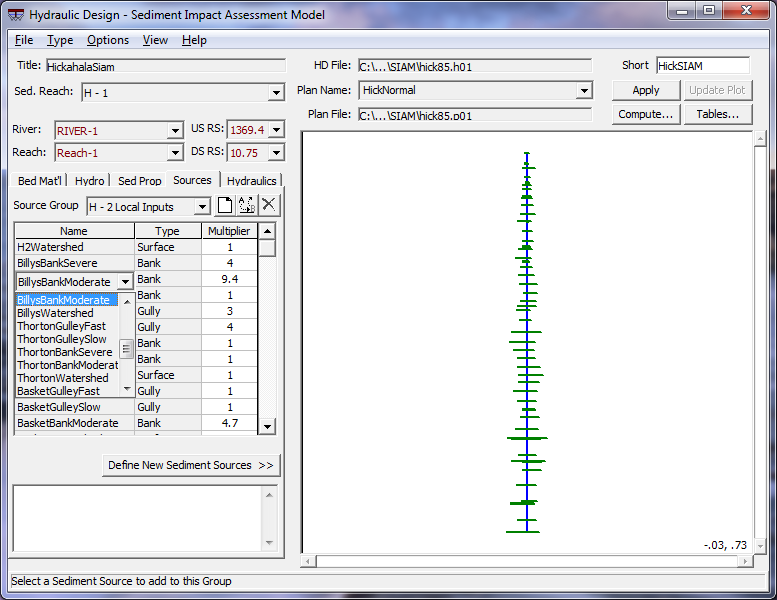In order to compare capacity to supply, sediment supply data must be entered. In SIAM sediment annual source information is entered for each sediment reach. This information is specified on the Sources tab. (below) Each Sediment Reach requires a Source Group, a collection of sediment source records. A given Sediment Source Group record can be used exclusively for one sediment reach or can be shared by more than one sediment reach.
Before sediment supply information can be selected for a Source Group source templates must be created. Sediment source records can be created or edited by selecting the Define/Edit Sediment Sources button:
 An inset window will appear for source definition. Press the "new record" button and name the source template. In addition to naming the source, a source Type also must be selected. A source can be labeled: gully, bank, surface erosion or other. This is only a grouping descriptor and has no impact on the computations.
An inset window will appear for source definition. Press the "new record" button and name the source template. In addition to naming the source, a source Type also must be selected. A source can be labeled: gully, bank, surface erosion or other. This is only a grouping descriptor and has no impact on the computations.
Once the sediment load template is generated the annual load must be specified by grain size. The second column of the table displays the upper grain size diameter limit of each grain class. Annual loads in tons/year are entered in the third column (below).
When the sediment sources are specified, close the source editor by pressing the OK button or the << Define/Edit Sediment Sources button, then select the appropriate source templates for each source group. A source record can be selected by clicking on the Name column of the Sources table. A drop down menu will appear populated with the source templates previously created. When a source record is selected the Type column will automatically populate. The Multiplier column defines the relative magnitude of the load. If the load record represents the load coming into the reach precisely then enter a multiplier of 1 and the numbers entered will be used.


However, if the load was entered per linear bank foot or per watershed acre (see note at the bottom of the load template in the figure above then the material entering the reach will be the source record multiplied by the multiplier entered. For example, in the figure above (bottom) the coarse bank material is entered in annual load generated by each linear foot of bank. This load is then multiplied by the length of exposed banks in the sediment reach. Additionally, a negative multiplier can also be entered, which will remove material from the sediment reach.